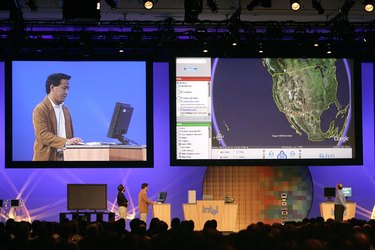
Downloaded over one billion times, Google Earth offers geographical data, 3-D modeling and historical images of the world. Most of the images are one to three years old and constantly updated to provide the highest resolution possible. Lower resolution or blurry images are occasionally caused by settings and cache updates, but there are a few things you can do to fix the problem.
Quick Comparison
Video of the Day
Compare your image from Google Earth with one of the same location from Google Maps. Since Google Earth tries to show the highest resolution image, clicking on "View" then "Historical Imagery," or clicking the clock icon in the toolbar, may provide a more recent image. In some cases, higher resolution images are unavailable, or the images are blurred by cloud cover.
Video of the Day
Google Earth Options
After comparing the image, if you notice that Google Earth shows a lower resolution image, there are a couple of quick fixes in local settings. Layers and anisotropic filtering can interfere with the images, making them look blurry, so turn off all layers in the Places Panel. Click on "Tools," "Options," "3D View" and turn off anisotropic filtering.
Cache Clearing
If the image is still blurry, cache updates may be the cause. Log out of Google Earth by clicking on "File" and "Server Log Out." Clear the cache through Google Earth by clicking on "Tools," "Options," "Cache." Log back into Google Earth. Check the streaming indicator at the bottom of the image to see when the data has finished downloading. To clear the cache more aggressively, since clearing it through the options may not work, navigate to the directory "C:\Users%username%\AppData%Local or LocalLow\Google\GoogleEarth" on your computer, replacing "username" with your computer's username. Alternatively, click on the Windows orb, "Start Search" and paste the directory path in the dialog box. While Google Earth is closed, click on and delete the "dbCache.dat" and "dbCache.dat.index" files. Restart Google Earth and log in. Google Earth will re-download all cache data and show the clearest images possible.
Reinstallation
Some users have reported that Google Earth crashes on startup after clearing the cache. If you experience this problem, remove and reinstall Google Earth -- only after clearing the cache manually, or if all else fails. The newest version can be found by clicking the "Download Google Earth" link on the Google Earth homepage.